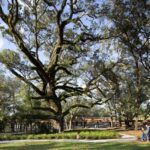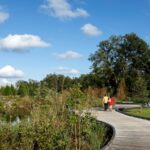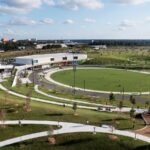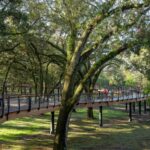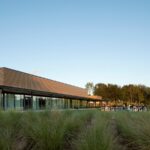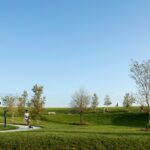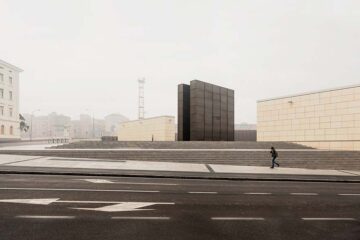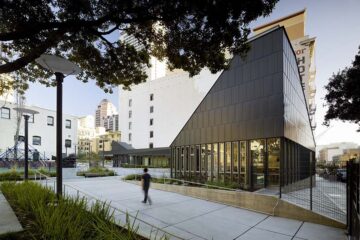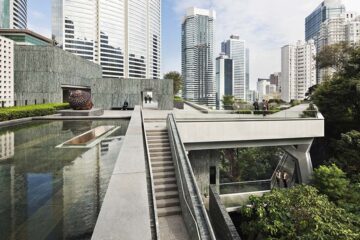Reviving Lakeland’s Legacy: The Transformation of Bonnet Springs Park
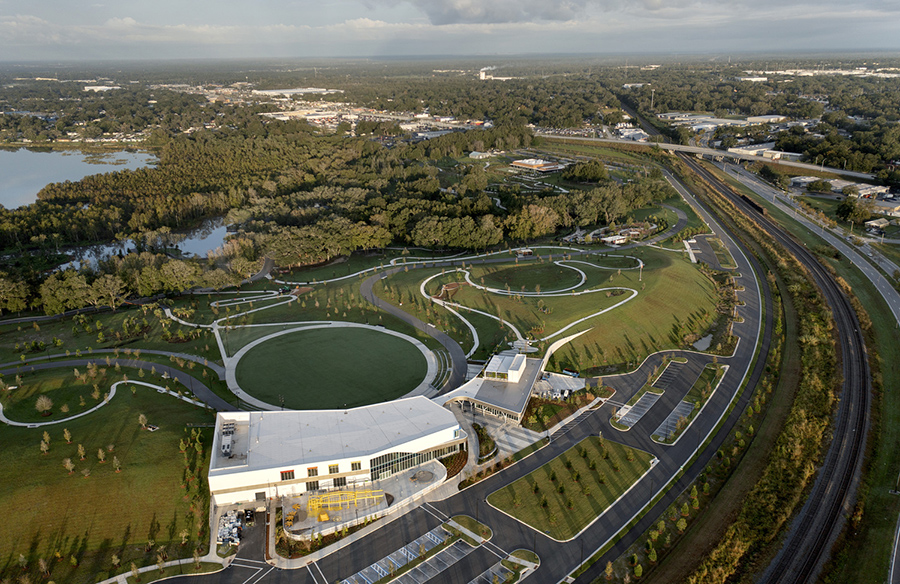
In the heart of Lakeland, United States, a historic site once home to the Lakeland Railyard has been revitalized into a vibrant public space known as Bonnet Springs Park. Designed by Sasaki architects, this transformative project not only pays homage to the area’s industrial past but also embraces sustainability and green design principles to create an ecological jewel and a cultural magnet for the community.
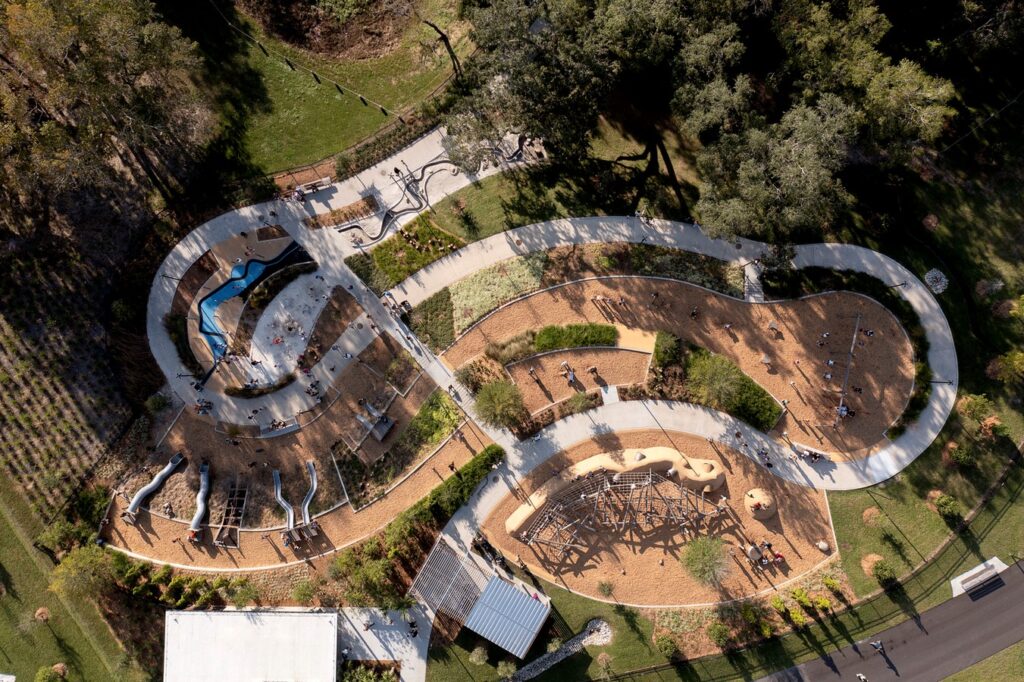
A Historic Legacy: From Railyard to Park
For decades, the Bonnet Springs Park site lay abandoned following the closure of the Lakeland Railyard in 1952. However, in 2017, the Bonnet Springs Park board commissioned Sasaki to develop a master plan for the site. Drawing upon public input and desires gathered during a six-month outreach period, Sasaki envisioned a park that would serve as an ecological haven, a cultural hub, and a vital community asset.
Remediating Industrial Legacy: A Brownfield Redevelopment
Decades of industrial activity had left portions of the site degraded, necessitating remediation efforts. Sasaki’s interdisciplinary team, in collaboration with local consultants, devised strategies to restore natural systems and mitigate contaminants. This included the removal of invasive plants, the creation of wetlands and bioswales for runoff treatment, and the capping of contaminated soil in hills that double as scenic overlooks.

Celebrating Nature and Culture: Design Features
The park’s design celebrates the region’s natural beauty and cultural heritage. Mature oak trees and meandering waterways are preserved and enhanced, while a Nature Center provides educational opportunities for visitors to learn about central Florida’s ecology. Interpretive exhibits at the Welcome Center showcase the area’s agricultural, industrial, and cultural history, complemented by an extensive botanic garden and works of art integrated throughout the park.
Connecting Communities: Accessibility and Inclusivity
Bonnet Springs Park serves as a unifying force, connecting neighborhoods divided by transportation infrastructure. New walking and bike paths, welcoming entrances, and transit integration ensure accessibility for visitors of all backgrounds. The park fosters social connections through various gathering spaces, including a banquet hall, a restaurant, and event lawn, promoting physical and social equity for all.
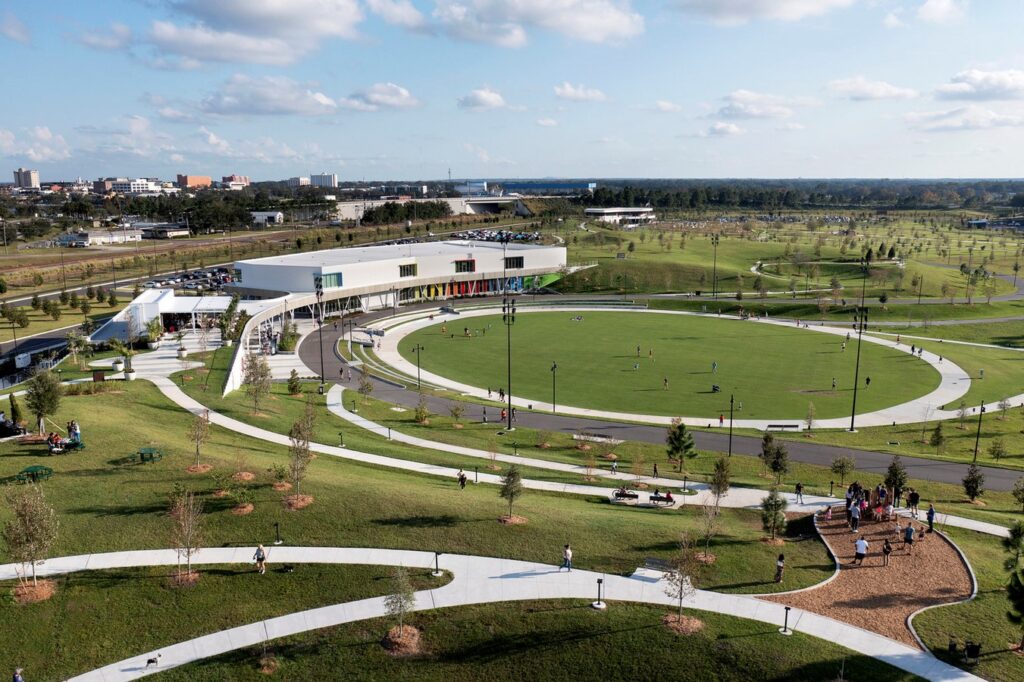
Fostering Shared Experiences: Community Engagement
With facilities ranging from a treehouse to a nature playground, Bonnet Springs Park offers activities for visitors of all ages. These spaces encourage social interaction and shared experiences, reinforcing bonds within the community and fostering connections in a rapidly evolving urban landscape.
In conclusion, Bonnet Springs Park stands as a testament to the transformative power of green design and community engagement. Through thoughtful planning and sustainable practices, Sasaki has reimagined a neglected industrial site into a thriving public space that celebrates nature, culture, and community, leaving a lasting legacy for generations to come.


